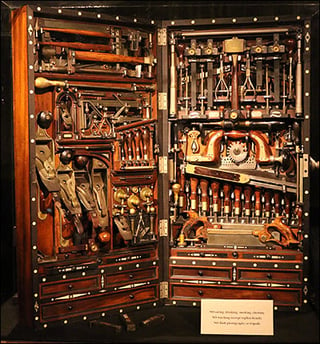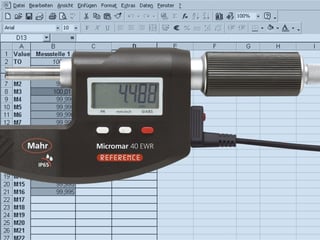Investing in Quality: Calibrated Gages
A master woodworker does not use a beat up yardstick while crafting a beautiful table. A world class clothier doesn’t eye ball your body before crafting an exquisite suit. A 4-star chef will use precise tools to measure ingredients to repeat a spectacular recipe. Why would you trust your precision metal work to a shop who didn’t invest in properly calibrated gages and a staff trained to use them correctly?

By assuring that each and every gage used to measure and produce a part has been correctly calibrated, and is being used in a proper manner by someone who is trained in the requirements for each precision gage in question, you can rest assured that your machining project will come out within your print specifications each and every time.
Proper gaging and inspection equipment is an investment, often an extremely pricey one. This is one of the reason why some shops struggle to maintain the accuracy and quality that you deserve (and should demand) consistently. By investing in the best gages, and continuing to invest in keeping them properly calibrated and functioning, your precision job will be able to continually, and reliably, produce the parts you need with the precision and quality you deserve.
As such, when looking for an outside vendor to handle your large contract machining work, be sure to ask about their inspection processes, calibration procedures, and other quality systems. Make the extra time to watch a machinist inspect an in-process part and pay extra attention to the frequency of their gage verification.

When it comes to your precision order, there is no point paying for a needed tight tolerance if the shop in question is going to continually miss it because they’re inspecting your part with poor gaging that is out of calibration. A 12” bore with a +/-.0005” tolerance is not going to be correct often if the machinist is using inspection equipment that is .0007” off target and they have no way of identifying that variance.
Proper gaging and calibration systems will assure that you are always getting a true, accurate measurement on each and every feature: and that is worth the investment of time and money that your contract shop should stand behind.

